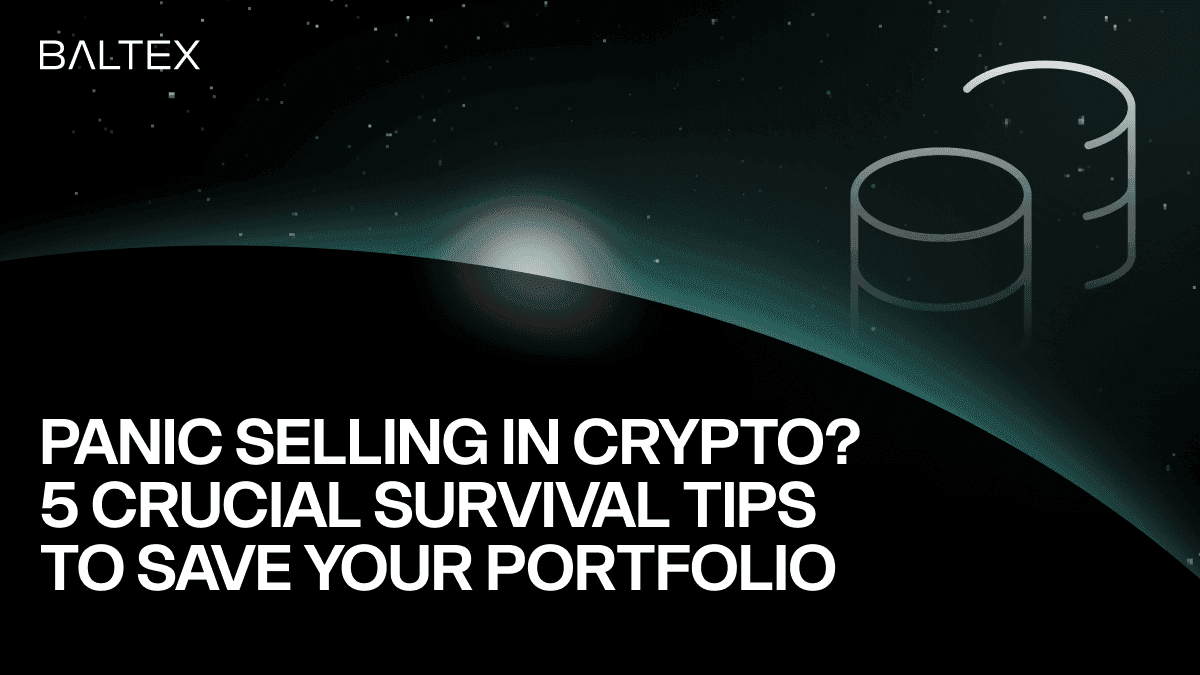
There’s a very specific type of silence that takes over a crypto holder's room when charts nosedive at 2AM — it’s not dramatic silence, it’s more like that weird static in your head where all logic evaporates and you're suddenly inches away from pressing “sell all” before you even finish your coffee. If that feels familiar, congratulations, you’ve met the beast: crypto panic selling.
Let’s pause here for a second — what is panic selling in crypto, and why is it such a portfolio killer?
Panic selling in the crypto market is when investors, driven by fear, uncertainty, or overwhelming market pressure, start dumping their assets at a loss, usually en masse, causing further downward spirals. It's emotional. It's messy. It's a feedback loop with no winners. Whether it’s triggered by Bitcoin slipping below a key psychological level or a regulatory tweet from someone in a suit, the result is the same: people sell not because they want to, but because they’re afraid not to.
And here’s the kicker — it doesn’t have to be that way.
So let’s get straight into it. Here are 5 real-world survival tips to help keep your crypto portfolio intact when the market turns into a rollercoaster and your instincts scream “get out”.
One of the most underrated survival skills in crypto trading? Perspective. When you're deep in red candles on the 15-minute chart, your brain tricks you into thinking this is it — the collapse, the doom, the wipeout. But switch to the daily or weekly chart, and suddenly what looked like an apocalypse becomes a minor blip. Zooming out helps remove emotional noise and puts current movements in context.
If your exit plan is just "I’ll figure it out when the time comes," you’re already playing a losing game. Set parameters: decide beforehand when you’ll sell (profit targets or stop-losses), what would make you rebalance, and how much emotional room you’ll give yourself. Write it down. Tattoo it on your wall if you need to. Because when things get chaotic, your emotions will try to override logic.
One of the cleanest ways to prevent panic selling is to automate. Whether it’s DCA (dollar-cost averaging), stop-losses, or smart limit orders, let automation take over decisions where emotion usually wrecks your judgment. Platforms like Baltex offer tools that help you swap and manage assets in real-time, without needing to babysit charts.
During market drops, every influencer, anonymous Twitter account, and Telegram group suddenly becomes an “expert.” Most are noise. Mute them. Instead, go for value-driven research — white papers, exchange reports, credible sources. Less TikTok, more Glassnode. When you cut out hype, you give your logic more room to breathe.
“HODL” isn’t just a meme, it’s a mindset — but only if it’s backed by real conviction. Ask yourself: do I believe in this asset long-term, or did I just FOMO in? The clearer your why, the easier it is to resist panic. It’s not about blind holding — it’s about educated confidence.
No, you don’t have to be a robot. Fear is normal. The crypto market is still wild, still young, still finding its feet. But if you can build systems — mental and mechanical — that help you ride through the fear without making impulsive moves, you're already ahead of most.
Baltex is here for that — a platform designed not just for swaps, but for smarter, calmer moves when others are losing it.
Panic is temporary. Your strategy doesn’t have to be.
Keywords: panic selling in crypto, crypto trading psychology, how to avoid panic selling, crypto portfolio protection, crypto investment strategy long term, crypto risk management strategies, best crypto trading tips 2025, automated crypto trading tools, Baltex crypto swap platform, hold vs sell crypto, crypto diversification strategies, crypto market volatility survival, emotional trading in crypto, crypto bear market tips, crypto investing mindset, how to manage crypto portfolio